A well-crafted feature request template can speed up the product development feedback process and improve communication between users and developers. By providing a clear framework, it helps users articulate their requirements effectively while ensuring that product teams gather all necessary information for evaluation and prioritization.
In this guide, you’ll discover the benefits of using a feature request template, the best practices for creating one (and the common pitfalls to avoid), and how to streamline the entire process with the free feature request template from monday dev.
Get the templateWhat is a feature request template?
A feature request template is a structured document that allows users, customers, or stakeholders to submit suggestions for new functionality, fixes, or enhancements in a product. Its primary purpose is to streamline the collection and organization of feedback, filter out unrelated requests, and make it easier for product teams to evaluate and prioritize any type of feature request.
What makes an effective feature request?
A well-written feature request drives meaningful product improvements and ensures product owners meet user requirements. Here are the key components to include in feature request forms:
- Feature request name: A concise title summarizing the request.
- Detailed description: An explanation of the feature, including its purpose and how it would work.
- Problem statement: A description of the issue the feature aims to resolve.
- Use case: Scenarios illustrating how the feature would be beneficial.
- Steps to recreate (if applicable): Outline steps to reproduce any existing issues.
- Attachments: Any relevant files or mockups that provide additional context.
- Categories: Classification of the request, e.g. bug fix, new feature, enhancement.
- Contact information: The requester’s contact details.
- Priority level: Indication of urgency, e.g. High, Medium, or Low.
- Request status: Current status of the request, e.g. New, In Review.
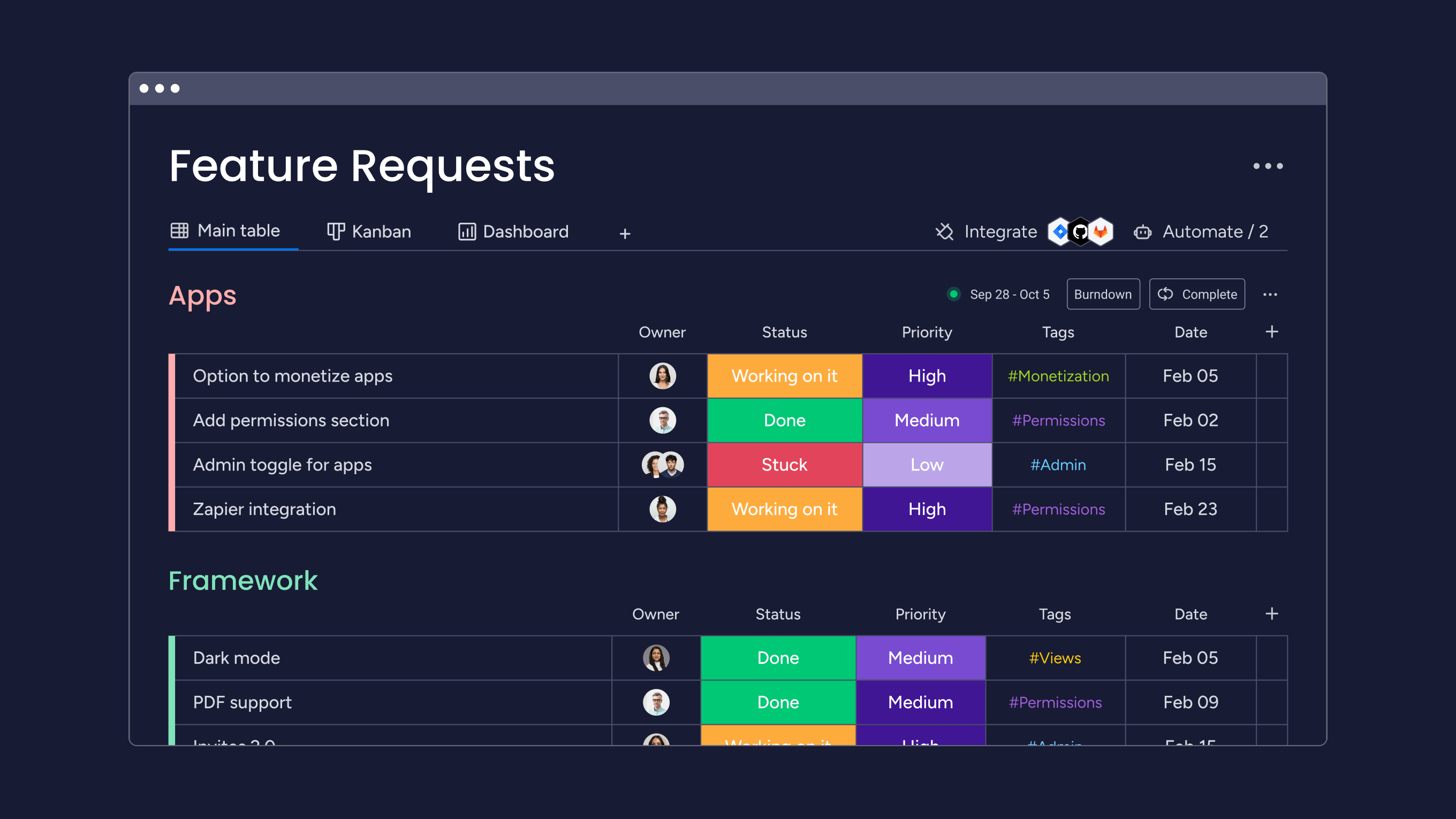
Why use a feature request template?
Using a feature request template not only streamlines the feedback process but also strengthens the relationship between users and product teams. Ultimately, it enhances product development and improves user engagement and satisfaction.
Structured feedback collection
Feature request templates provide a standardized format for users to submit their suggestions, ensuring you capture all necessary information consistently. This structure helps organize feedback, making it easier for product teams to analyze and prioritize requests based on user needs and pain points.
Enhanced communication
Feature request templates enhance communication between users and product teams. They allow users to articulate their frustrations and suggestions clearly, fostering a sense of community and making customers feel valued. This engagement can lead to increased loyalty and satisfaction.
Time efficiency
Using a feature request template saves time for both users and product teams. It streamlines the submission process and reduces the time spent filtering through vague or unrelated requests. It allows product managers to track requested features and their requesters, as well as check which requests have been completed and which ones require additional attention.
Reduction of duplicate requests
Feature request templates help minimize duplicate submissions, as users can see existing requests before submitting their own. This consolidation allows for more effective prioritization of features based on collective user interest rather than scattered individual requests. Some of the more robust feature request templates let you choose how to sort each new request and whether to auto-assign it to team members or add it to the backlog.
Prioritization of user needs
By collecting structured data on user requests, product teams can classify the most important features of their audience. This insight aids in developing a user-centric product roadmap and allocating resources effectively.
Continuous improvement loop
Regularly gathering feature requests through templates creates a feedback loop where users feel heard and involved in the product’s evolution. This ongoing interaction encourages users to share more insights and enhance the product further.
Clarity for development teams
A well-designed template provides developers with clear, actionable information about what features are needed and why they matter. This clarity reduces ambiguity in the development process, allowing teams to focus on implementing features that genuinely enhance user experience.
3 types of feature requests
Feature requests don’t always involve new additions to a product. A feature request template opens the floor to feedback on any features, existing or new. You can categorize feature requests based on their purpose and the proposed changes for a product. Here are the main types of feature requests:
Bug fix requests
Bug fix requests arise when users encounter errors or issues that prevent them from using the product as intended. Fixing these issues is critical as they can significantly impact user satisfaction and retention. For example, a user reports that a button is unresponsive, hindering their ability to complete a task.
Bug fix request templates help teams collect specific details to fix the issue and create a bug report. The most common fields include:
- Location of bug
- Description of the bug’s impact
- The environment it occurred in
- Any visual proof such as a screenshot or screen recording
- Steps to reproduce the error
- The expected outcome of the function vs what occurred due to the bug
Providing users with a structured bug fix request template expedites locating and correcting errors.
New feature requests
New feature requests allow users to suggest entirely new functionalities that do not currently exist in the product. This type of request often aims to enhance the overall user experience. For example, a user requests a new reporting tool that provides advanced analytics.
A new feature request template separates functionality requests that do not pertain to existing product components. Users only have fields on the form to describe new features and functionality they would like to see.
Improved functionality requests
Improved functionality requests focus on enhancing existing features, making them more effective or user-friendly. Users may suggest modifications based on their experiences and needs. For example, a user suggests adding filtering options to an existing search feature to improve usability.
Other improvement examples include:
- User experience enhancements — e.g. a user recommends redesigning the navigation menu for easier access to frequently used features.
- Performance improvements — e.g. a user requests faster load times on a dashboard.
- Integration requests — e.g. a user asks for integration with a CRM system to improve data management.
Summary table:
| Type | Description |
|---|---|
| Bug fix requests | Address errors preventing proper functionality |
| New feature requests | Introduce brand new functionality |
| Improved functionality requests | Enhance existing features based on user feedback |
| User experience enhancements | Improve UI/UX for better accessibility and intuitiveness |
| Performance improvements | Optimize product speed and efficiency |
| Integration requests | Connect with other tools or platforms |
Tips for requesting and managing product feedback
Here are some practical tips for requesting and managing product feedback, leading to enhanced user satisfaction and continuous product improvement.
Tips for requesting product feedback
Create a branded feedback portal
Develop a dedicated platform where users can easily submit feedback and feature requests. This ensures consistent communication and makes it convenient for users to share their ideas anytime, rather than relying on sporadic surveys.
Implement single sign-on (SSO)
Simplify the login process for your feedback portal by offering single sign-on options. This can significantly increase user participation in submitting feedback.
Encourage upvoting
Allow users to upvote existing feature requests. This engages users and helps prioritize popular suggestions, ensuring you consider the most desired features first.
Facilitate comments on requests
Enable users to comment on each other’s feature requests. This can provide additional context and insights, reduce duplicate submissions, and foster community interaction around ideas.
Use clear guidelines
Establish clear guidelines for submitting feedback. This helps maintain organization and encourages users to provide concise, relevant requests.
Tips for managing product feedback
Centralize feedback collection
Use a dedicated platform to collect and organize all feature requests in one place. This prevents important feedback from getting lost in various communication channels.
Categorize feedback
Organize feedback according to its purpose and importance. This categorization aids in prioritizing tasks in your development backlog.
Utilize a prioritization matrix
Implement tools that help visualize and prioritize feedback based on popularity and relevance, making it easier to decide what features to develop next.
Provide regular updates
Keep users informed about the status of their feature requests. Transparency about what features are being implemented or rejected fosters trust and shows that user input is valued.
Create a dedicated team
Assign a specific team or individual responsible for managing feature requests. This ensures consistent handling of feedback and keeps popular requests from falling through the cracks.
Close the feedback loop
After implementing features based on user feedback, communicate back to users about how their input influenced the changes. This reinforces engagement and encourages future contributions.
Best practices for creating an effective feature request template
Here are ten key recommendations and best practices for creating an effective feature request template.
- Keep it simple and concise:
- Include only 2-4 key fields to reduce barriers to submission
- Focus on capturing essential information without overwhelming users
- Include these core components:
- Title: A clear, descriptive name for the feature request
- Detailed description: Explanation of the feature and how it would work
- Problem statement: What issue this feature aims to solve
- Use cases/scenarios: Examples of how you (would) use the feature
- Add contextual fields:
- Priority level (e.g. High, Medium, Low)
- Categories/tags for easy sorting
- User type (if you have different user segments)
- Attachments for screenshots/mockups
- Ask about impact and reasoning:
- Why the user wants this feature
- How not having it negatively affects them
- What they would be able to achieve with it
- Include fields for internal use:
- Requester name/contact info
- Status tracking (e.g. New, In Review, Implemented)
- Effort estimation
- Use clear language and provide examples:
- Write instructions and field labels in simple, user-friendly language
- Include example responses to guide users
- Make it visually appealing and easy to fill out:
- Use a clean, intuitive layout
- Leverage dropdown menus and multiple choice where possible
- Allow for flexibility:
- Include an open-ended comments field for additional context
- Make non-essential fields optional
- Align with prioritization needs:
- Include fields that will help with scoring/prioritizing requests later
- Iterate and improve:
- Regularly review and refine the template based on the quality of submissions and team feedback
The key is striking a balance between gathering enough detail to act on requests while keeping the process quick and simple for users. Tailoring the template to your specific product and user base is crucial.
Common mistakes to avoid when creating a feature request template
Here are ten common pitfalls to avoid when creating a feature request template.
- Making the template too complex or lengthy:
- Including too many fields or asking for excessive details can overwhelm users and discourage submissions.
- Not providing clear guidelines:
- Failing to explain what constitutes a valid feature request and provide adequate instructions on how to fill out the template correctly confuses users.
- Allowing duplicate requests:
- Not implementing a system to suggest similar existing requests based on keywords can lead to split upvotes and difficulty prioritizing requests.
- Neglecting to ask about impact and reasoning:
- Failing to inquire why users want a feature and how its absence affects them makes it challenging to understand the importance of requests.
- Using overly technical language:
- Making the template difficult for non-technical users to understand and complete may discourage submissions.
- Not including fields for internal use:
- Omitting fields for tracking request status, effort estimation, or priority levels makes managing and prioritizing requests internally difficult.
- Lack of flexibility:
- Not allowing for open-ended comments or additional context for unique requests may prevent you from capturing all the necessary information.
- Poor visual design:
- Creating a cluttered or visually unappealing template that’s difficult to navigate will likely discourage users from submitting requests.
- Not aligning with prioritization needs:
- Failing to include fields that help with scoring or prioritizing requests later can make it challenging to evaluate the relative importance of each request.
- Using boilerplate content:
- Including irrelevant or distracting content takes the focus away from the actual feature request.
By avoiding these common mistakes, you can create an effective feature request template that encourages user participation and provides valuable insights for product development.
How to respond to a feature request
Answering feature requests efficiently and effectively is crucial for maintaining user engagement and ensuring feedback is valued. By following these best practices, you can create a positive feedback loop that not only enhances user satisfaction but also helps shape and align your product development.
1. Acknowledge every request
Prompt response: Always acknowledge receipt of a feature request promptly to show users that their input is valued and encourage ongoing participation.
Personal touch: Respond personally and honestly, thanking the user for their suggestion, even if you cannot implement it immediately.
2. Provide transparency
Explain the process: Clearly communicate your feature request review process to users. Let them know how you will evaluate their requests and the timeline for feedback.
Status updates: Keep users informed about the status of their requests — whether they are under consideration, in development, or rejected — to foster trust and engagement.
3. Categorize and prioritize requests
Organize feedback: Use a centralized system to categorize and prioritize feature requests based on their relevance to your product strategy and user requirements.
Evaluate holistically: Consider each request in the context of your overall product roadmap and user personas to help make informed decisions about which features to develop.
4. Engage with users
Open dialogue: Encourage users to provide additional context or clarification about their requests through follow-up questions or discussions.
Community interaction: Include feature requests in a public portal where users can comment and discuss them. This transparency can lead to valuable insights and community engagement.
5. Set realistic expectations
Underpromise and overdeliver: If you cannot implement a requested feature right away, consider offering alternatives, such as workarounds or related resources, to help manage user expectations.
Learn to say no: Not every request will align with your product goals. Be honest about what you can realistically develop, explaining why you cannot pursue certain features at this time.
6. Follow-up after implementation
Communicate changes: Once you’ve implemented a feature request, inform the user how their input contributed to the change. This reinforces the value of their participation and encourages future engagement.
Streamline your feature requests with monday dev
Product teams can reap tremendous benefits from a tailor-made feature request template. And organizing, cataloging, and accessing the data in one centralized location can increase those benefits even further.
Built on monday.com Work OS, monday dev helps you streamline requests and feedback collection in one flexible platform. It keeps product managers and developers aligned and agile, ready to respond to the latest feature requests from users.
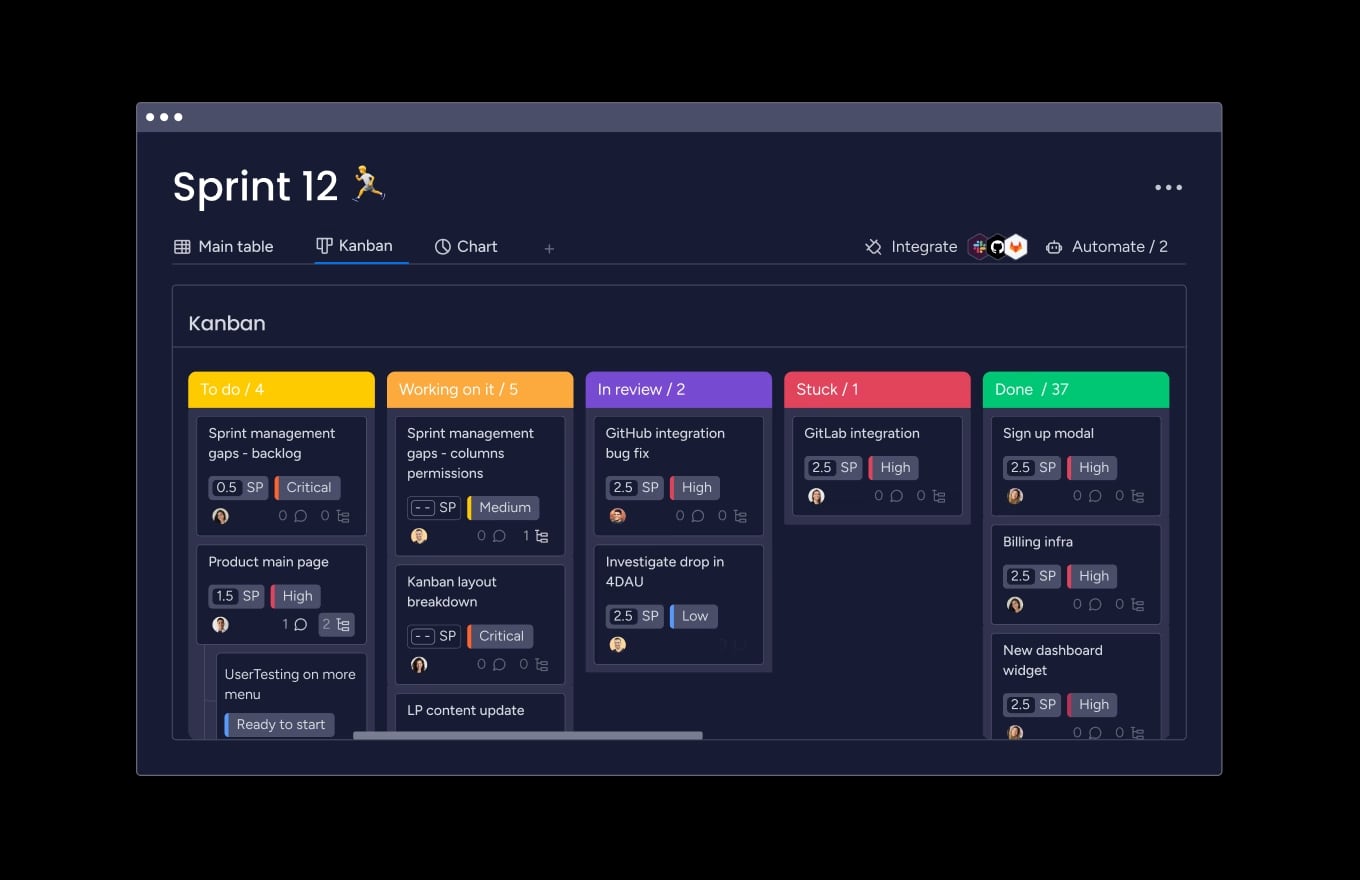
- Boards: Visualize requests for bug fixes, new features, and enhancements with customizable columns for description, requester, developer, status, priority, age, required effort, and more.
- Custom dashboards: Automatically update dashboards with data from up to 50 boards so everyone can see the latest information.
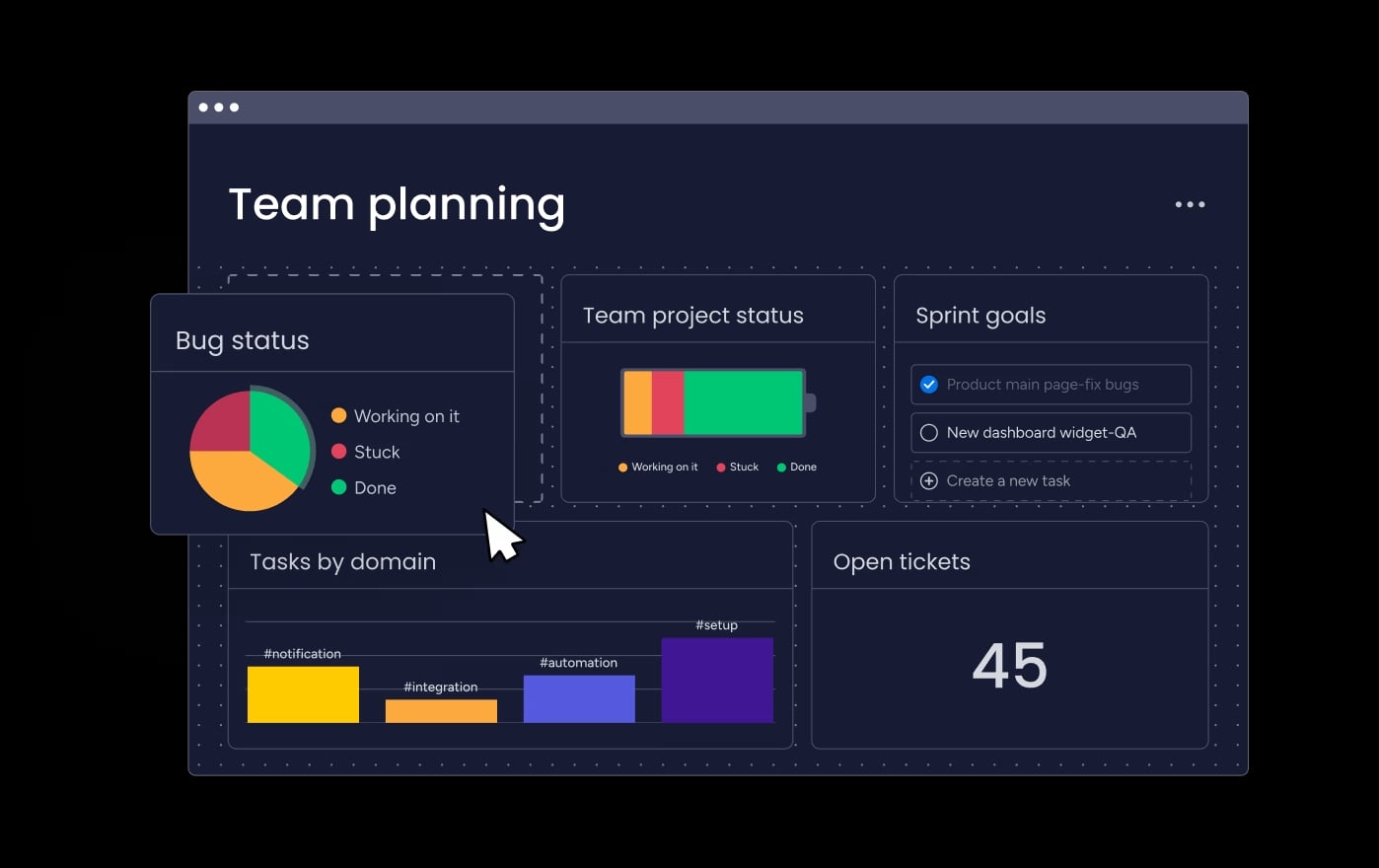
- Workload: Use the Workload View to check availability and skillset when assigning feature requests.
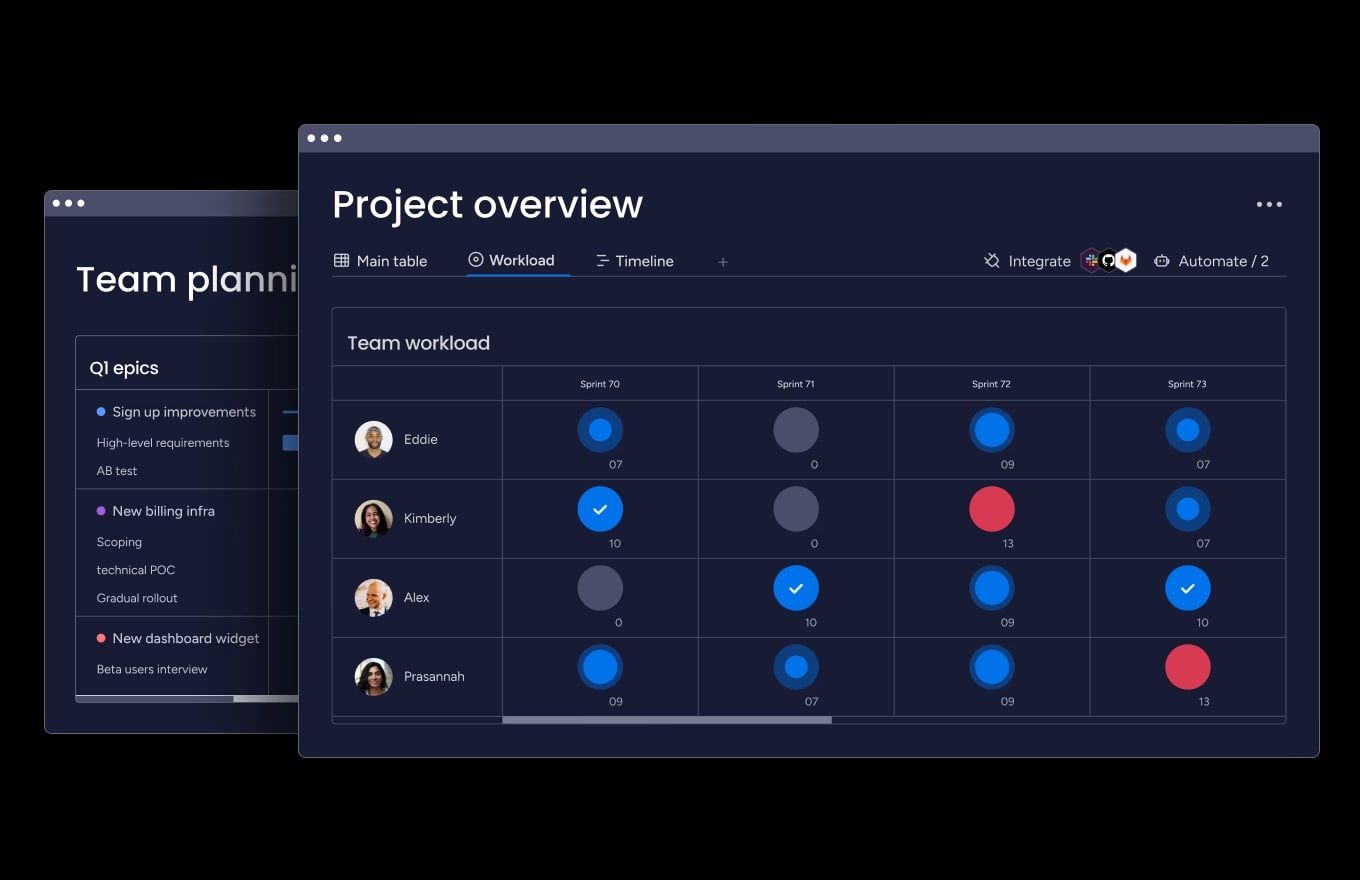
- Communication: Collaborate on documentation, work on requests, and save time by leveraging your team’s collective knowledge as you tackle each feature request.
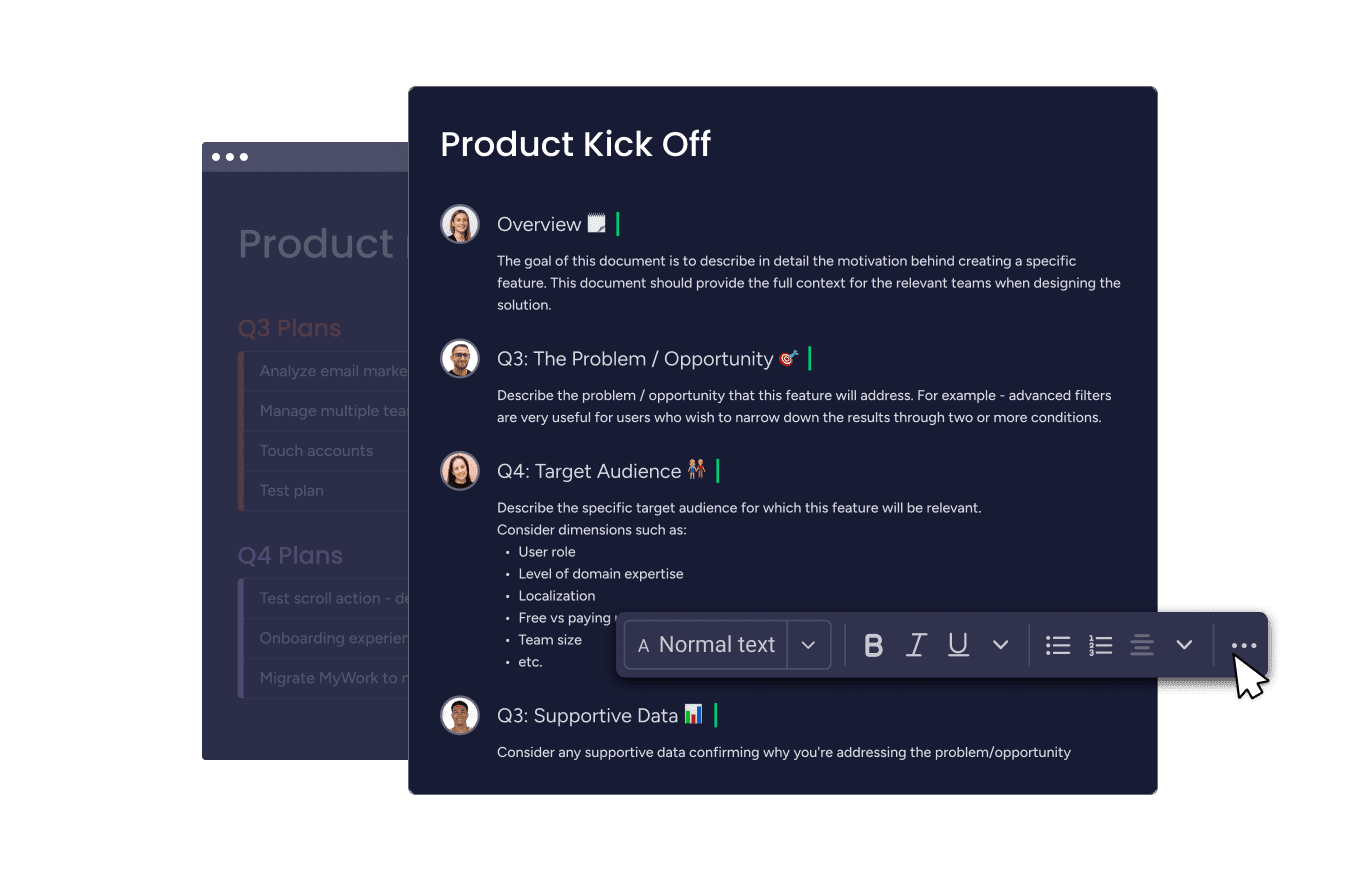
- Automation: Use the built-in automation tools to add new requests to the product backlog, assign owners, and update statuses when tasks get completed.
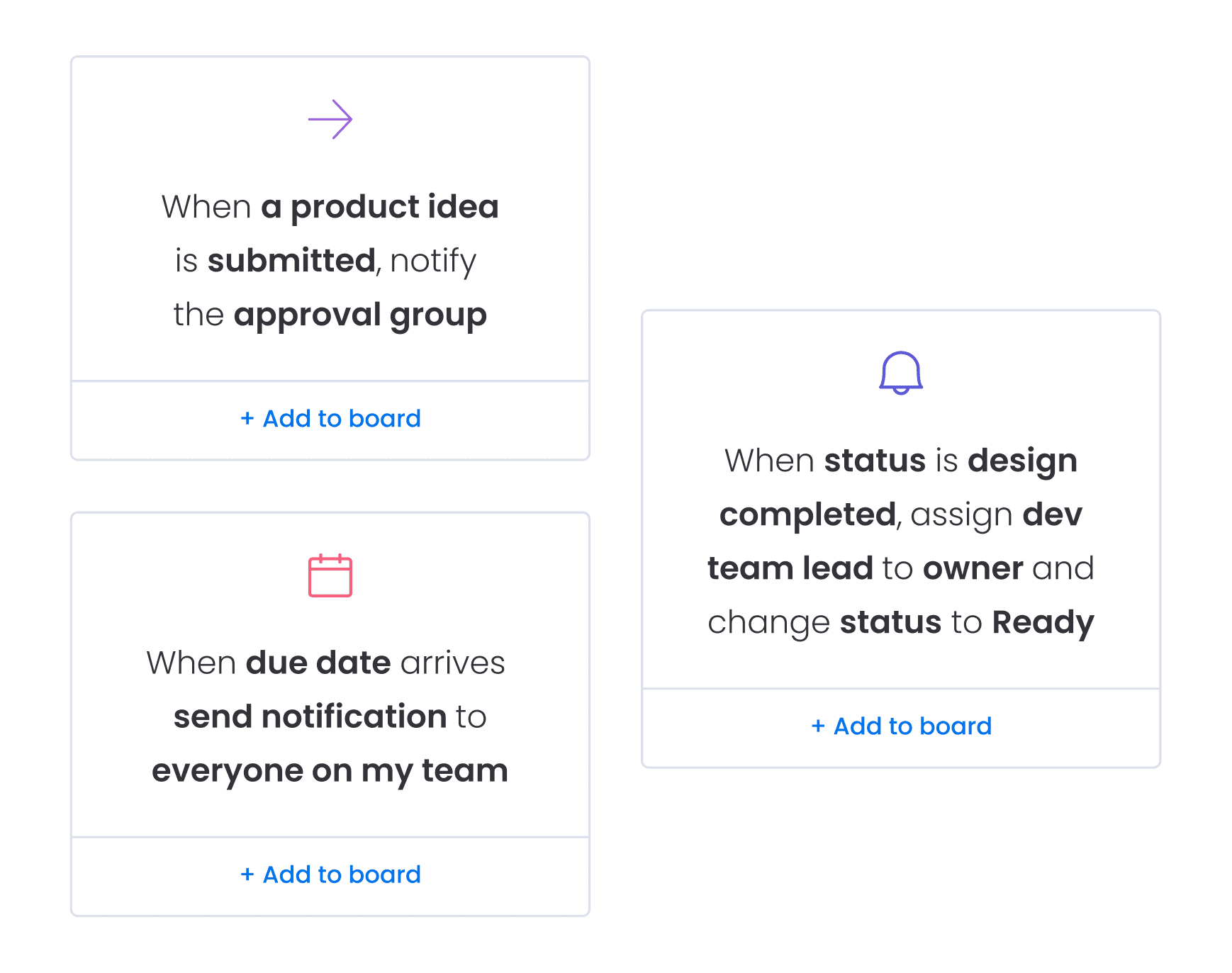
Start your free, 14-day trial today to see how you can streamline your feature request process with our flexible platform and customizable template.
FAQs
How do you write a feature request?
To write a feature request, start with a concise title summarizing the requested feature. Then, provide a detailed description that outlines the problem the feature aims to solve, its potential benefits, and specific use cases to illustrate how you would utilize it. Including any relevant attachments, such as mockups or screenshots, can further clarify your request and enhance understanding.
What should a feature request include?
A feature request should include a concise title, a detailed description, and a problem statement explaining what issue the feature aims to solve. Additionally, it should provide specific use cases, the requester's contact information, and any relevant attachments or visual aids to clarify the request.
What is the difference between a feature request and an enhancement request?
In practice, the line between feature requests and enhancement requests can sometimes be blurry, and organizations may use these terms slightly differently. An enhancement request refers to improvements or modifications to existing features, making them more effective or user-friendly. In contrast, a feature request may cover new functionality, fixes, or enhancements to a product. The key is to clearly understand how these types of requests are categorized and handled within your specific product development process.
What is the difference between a feature request and a change request?
A feature request is a suggestion for adding new functionality, enhancements, or bug fixes to an existing product. In contrast, a change request is a formal proposal to modify existing features or functionality, often arising from client needs or project adjustments. Typically, it follows established procedures for approval and implementation.
What is a feature request in Agile?
In Agile development, feature requests are an addition or change to the product backlog. They’re usually expressed as user stories, which specify the type of user, their requirements, and their motivations.
 Try monday dev
Try monday dev 
